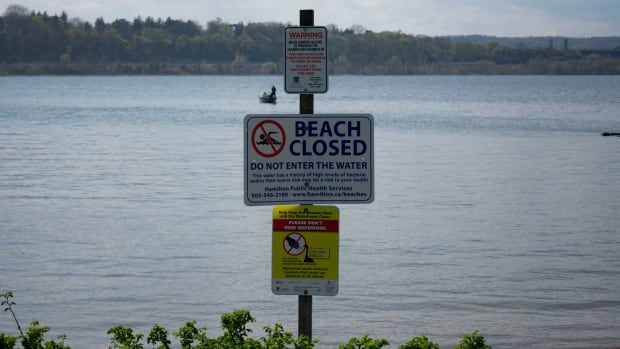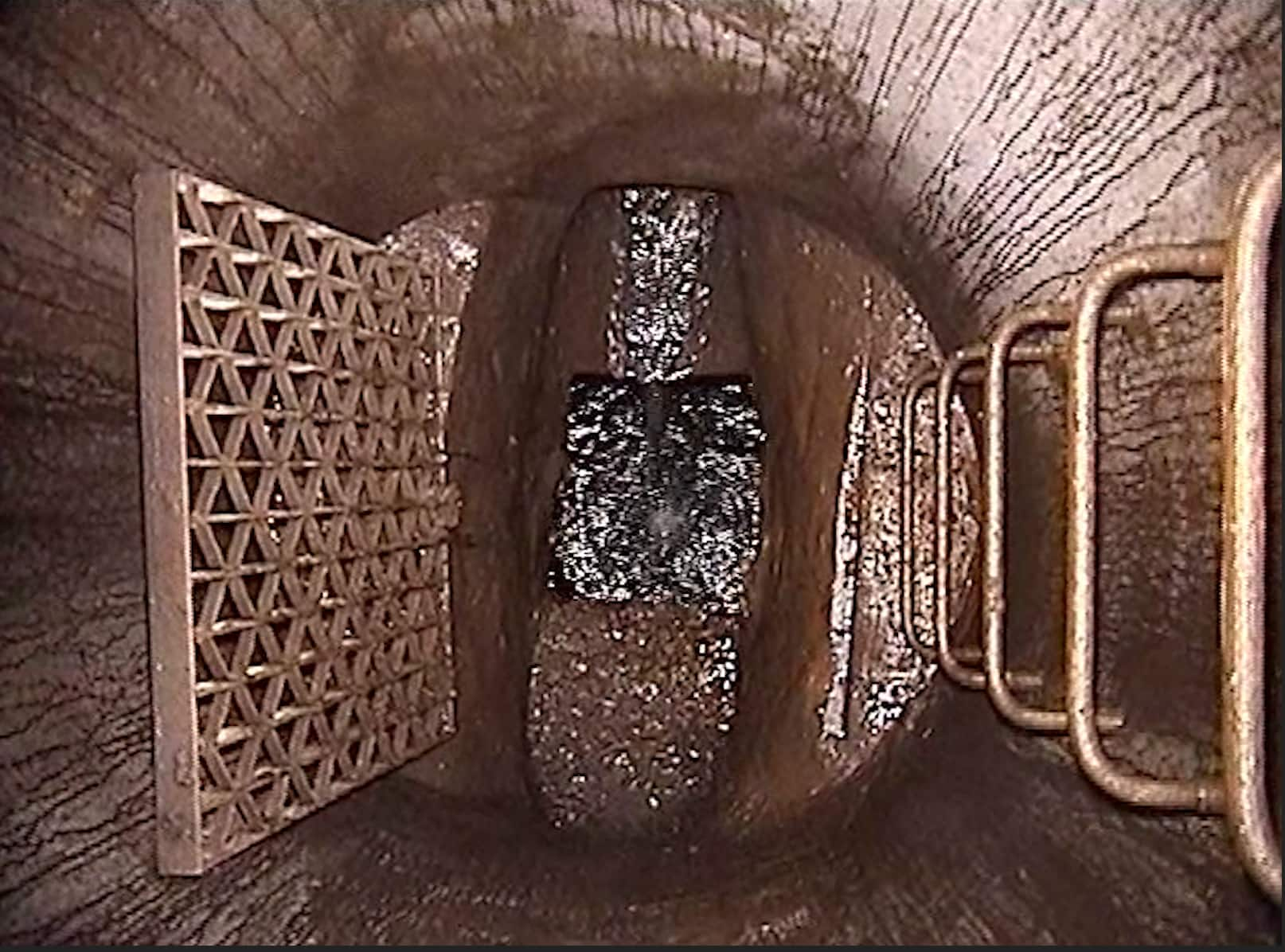
The City of Hamilton estimates 337 million litres of sewage — roughly 135 Olympic-sized swimming pools worth of sewage — flowed into the harbour since 1996.
That’s roughly 13 million litres per year for 26 years.
“City staff developed this estimate based on the water meter usage data for all of the properties connected to the combined sewer pipe,” read a media release from the city on Monday morning, adding this method was identified as the most accurate way to represent the discharge over the 26 years.
“The repair work and realignment of the sewer was completed on Wednesday, Nov. 23, 2022 at 9:32 p.m., and all sewage is now flowing into the Western Sanitary Interceptor and all appropriate repairs to the combined sewer have been completed.”
Last week, the city discovered the leak near Wentworth Street North and Burlington Street East.
Director of Hamilton Water Nick Winters said an incorrect illustration was given to contractors, which led to a hole being made into a combined sewage pipe in 1996.
That caused the waste from 50 properties along Macallum Street and parts of Brant Street and Wentworth Street North to spill right into Lake Ontario.
The city says fixing the hole cost $29,830.
WATCH: City of Hamilton discovers 26-year leak of sewage into Hamilton Harbour
The city of Hamilton says it has discovered sewage has been leaking into the Hamilton Harbour since 1996 because of a hole in a combined sewage pipe in the industrial sector.
The city said it has informed the Ministry of Environment, Conservation and Parks of the update, and added the ministry hasn’t issued Hamilton an order to come up with a remediation plan or audit its entire sewage infrastructure.
Last week Tys Theijsmeijer, head of natural lands at Royal Botanical Gardens, said he expects at least one more leak in the city.
City staff will bring a report to the public works committee on Monday afternoon, and there’s a webpage solely for updates on the leak.
What life is in the harbour and how is it impacted?
Hilary Prince, a spokesperson for Fisheries and Oceans Canada, told CBC Hamilton the harbour is home to many native fish species like northern pike, stocked walleye, largemouth bass, sunfish and yellow perch — but things are not looking good for them.
“Most of these species are in decline and in lower abundance than populations found in healthier areas of Lake Ontario,” Prince said.
Fish that thrive in the harbour only do so because they’re “largely tolerant of degraded water quality conditions, including high turbidity, or cloudiness of the water, and low dissolved oxygen.”
“Native species like gizzard shad and brown bullhead are hyper-abundant in Hamilton Harbour compared to other areas of Lake Ontario likely because of their tolerance for poor water quality conditions,” Prince said.
Non-native species like common carp, goldfish and rudd can also be found in the harbour.
She added there is likely no aquatic vegetation in the immediate area around the leak, because it’s all industrial and quite deep.
Prince said untreated sewage adds to the problem of excessive nutrient loadings and algae blooms, both of which hurt fish and their habitat.
“When algal blooms die off, the decomposition process consumes oxygen from the water, which has negative impacts on fish and is one of the persistent problems in Hamilton Harbour,” she said.
More to come.
